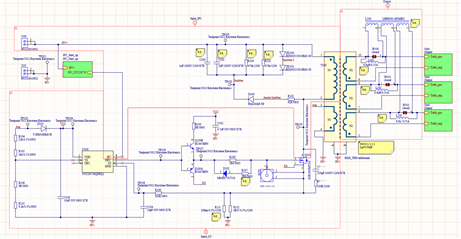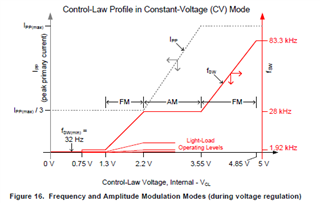Other Parts Discussed in Thread: UCC24650, UCC28740, UCC28742
Hi,
I have designed a 10 W Flyback-Converter with 3 Outputs with a Inputvoltage of 60-1000V and an Outputvoltage of 15V.
I am now trying to put the PCB in operation, but I am facing unstable switching behaviours. To simplify the the process I have started with only on connected output winding. I am using a 10 to 1 winding ratio and a clamp with two 100V Zener-Diodes. I have also added a snubber from the primary switch drain to primary side GND to reduce the ringing on AUX/VS during the demagnetisation phase.
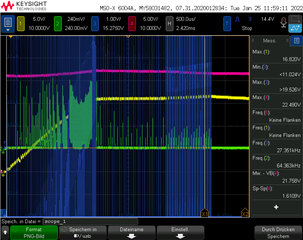
I have obsered that even with strongly dampened ringing on the Aux Pin (blue) the switching behaviour would be instable. The controller seems to regulate the output at first, but then switches to higher frequencies before it switches of. In some configurations the switching frequencies would go to over 100kHz, which lets me assume that the controller is going back into its high-frequency start-up state. Are you familiar with this behaviour? Is there a maximum dV/dt that the slope of the AUX/VS should have during demagnetisation? The slope at VS-pin is very close to 0.125V/200ns. Tdemag min is achieved at Ippmin to Ippmax.
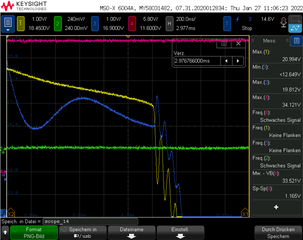
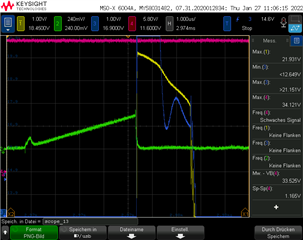
I also observed a spike at the end of the demagnetisation phase on the Vaux (blue). An opposing spike can be observed on the secondary winding voltage (yellow). (These pictures where taken with different value for the snubber). Could this influence the voltage sensing and regulation? I have already tried using shottky-diodes as rectifiers and various snubbers for the rectifiers. I did not seem to influence the spikes.
Kind regards
Ludwig Jostes


